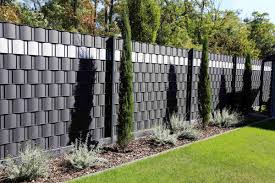
Fencing Freedom: Exploring the Limits of Boundaries
Over and above their concrete advantages, fences maintain symbolic significance, embodying notions of possession, personality, and social norms. As guardians of your limit between general public and exclusive realms, fences represent cultural ideals and condition individual interactions. In this article, we check out the nuanced definitions related to fences (ploty) ences as well as their long lasting meaning in contemporary society.
1. Management and Limitations:
fences (ploty) symbolize acquisition, delineating areas that participate in individuals or residential areas. By demarcating boundaries, fences assert power over territory and assert residence proper rights. With this sensation, fences serve as tangible expression of sovereignty and autonomy, reinforcing a feeling of that belongs and bond to the terrain.
2. Level of privacy and Closeness:
Inside an increasingly interlocked planet, fences give sanctuary from exterior inspection, cultivating intimacy and privacy inside enclosed spaces. Non commercial fences, for instance, make remote retreats where folks can relax, socialize, and focus on leisure time activities without anxiety about intrusion. By delineating personal websites, fences maintain autonomy and private autonomy, looking after connections and encouraging feelings of protection.
3. Societal Divisions and Addition:
While fences offer you security and personal privacy, in addition they perpetuate societal divisions and exclusions. Great wall space and barbed cable fences can denote exclusivity and elitism, segregating neighborhoods along socioeconomic lines. However, reduced fences and open gateways market inclusivity and neighborly interactions, bridging divides and encouraging societal cohesion. The design and exposure of fences mirror underlying potential dynamics and ethnic behaviour towards inclusion and exclusion.
4. Enviromentally friendly Influence:
The proliferation of fences has ecological effects, altering ecosystems and disrupting animals corridors. In non-urban countryside, substantial fencing can fragment habitats, impeding the movements of wild animals and exacerbating biodiversity reduction. Nonetheless, eco-warm and friendly fencing alternatives, for example wildlife-pleasant styles and permeable barriers, provide solutions that balance human being demands with environmental conservation, lessening the environment footprint of fences.
5. Historic and Cultural Relevance:
All through historical past, fences have enjoyed critical functions in shaping man communities and countryside. From ancient fortifications to colonial enclosures, fences have already been equipment of conquest, colonization, and territorial control. In cultural contexts, fences attribute prominently in literature, art, and folklore, symbolizing concepts of break up, confinement, and liberation. Knowing the historic and societal contexts of fences enhances our appreciation with their symbolic definitions and enduring legacy.
To sum up, fences function as greater than physical obstacles they embody complex narratives of management, level of privacy, sociable dynamics, and enviromentally friendly stewardship. As icons of limitations and that belongs, fences condition individual activities and reflect the principles and dreams of societies prior and present. Understanding the symbolic incredible importance of fences enhances our understanding of the built surroundings and our relationship together with the property.



